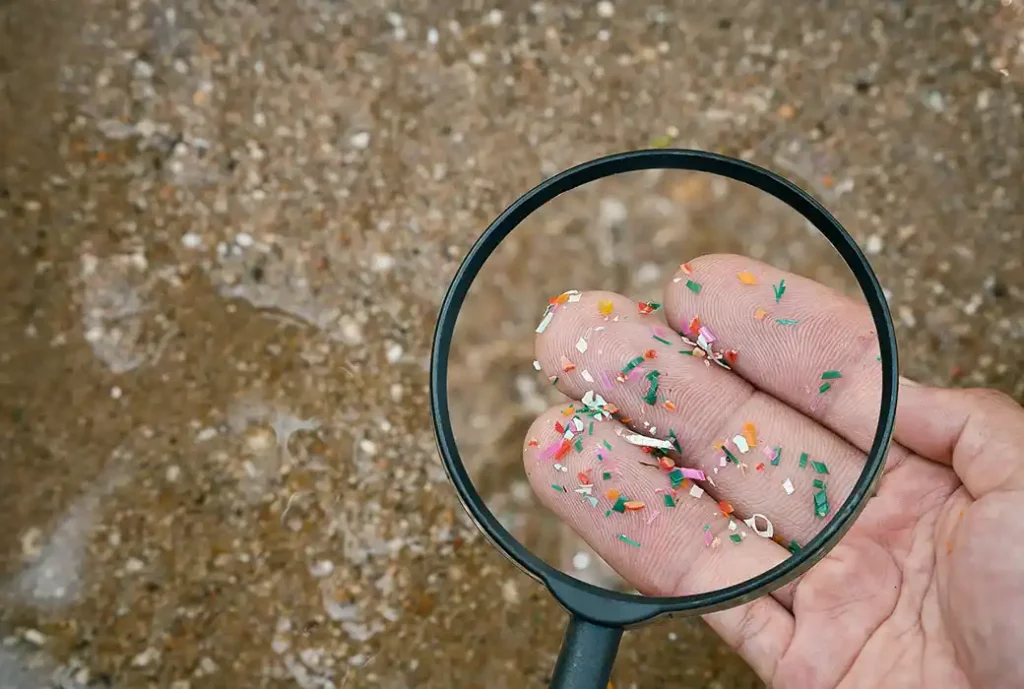
When you hear the word “sustainable,” “sexy” probably isn’t the first thing that comes to mind. However, these two concepts are surprisingly intertwined. Learn about the key reasons why we should be talking more about how sustainability is sexy.
Sustainability isn’t just about saving the planet; it’s about enhancing your health, well-being, and even your attractiveness.
Learn 16 compelling reasons why adopting a sustainable lifestyle is not only beneficial for the environment but also for you. From improving your physical health to boosting your attractiveness and increasing your lifespan, the benefits are numerous and impactful.
What is Sustainability?
Sustainability means meeting our present needs without compromising the ability of future generations to meet theirs. Over the past two centuries, human activities have dramatically altered Earth’s environments and living systems, often with detrimental effects on our health. Reducing global warming, cutting emissions, and minimizing environmental impacts associated with resource extraction and processing are crucial steps. (1, 2)
While these challenges might seem overwhelming, remember that your individual choices can have a huge impact. Living sustainably isn’t just possible—it’s beneficial for your health. And let’s be honest, sustainability is sexy! Here are some surprising reasons that will inspire you to embrace a more sustainable lifestyle.
16 Shocking Reasons Why YOU Should Care About the Environment
We’ve all heard about the alarming rate at which the Earth is getting degraded. Glaciers are melting, animal habitats are being destroyed, and greenhouse gas emissions are skyrocketing. But beyond these environmental crises, there are many personal benefits to adopting a greener lifestyle. Here are some surprising reasons to motivate you towards sustainability.
1. People are More Attracted to Those Who Care About the Environment

Researchers found that people who are pro-environment and display it in their everyday lives are seen as more attractive and more suited for long-term relationships. Conversely, those who are less environmentally conscious are often seen as less appealing and more likely to be chosen for short-term relationships.
Interestingly, people tend to exhibit greener behaviors when interacting with the opposite sex. (3) So, the next time you think being sustainable is unimportant, remember that going green can boost your attractiveness. Being green is sexy!
2. Microplastic Ingestion Can Harm the Female Reproductive System and Induce Miscarriage
Microplastics are an environmental health issue that not only affects men but also impacts women. Chemicals like BPA and phthalates disrupt hormone regulation, affecting menstrual cycles and ovulation.
Humans are exposed through ingestion of contaminated water and food, as well as leakage from plastic products. Additionally, toxic runoffs from corporations release heavy metals, such as lead and mercury, that contaminate the land and accumulate in the body over time. Women are more affected due to the fixed and non-renewable pool of germ cells in the ovaries. (4)
In animal studies ingestion of microplastics leads to excessive cell death in the placenta and can induce miscarriage. (5) For many women, having a family and raising kids is a dream. It’s important to do everything possible to give ourselves the best chance of achieving that.
3. Exposure to heavy metals, depleted ozone, rising global temperatures and air pollution is associated with premature birth, low birth weight, and stillbirth
The link between environmental pollutants like heavy metals, depleted ozone, air pollution, and adverse birth outcomes is clear. Exposure to these pollutants is associated with a higher risk of premature birth, low birth weight, and stillbirth. This evidence serves as a reminder that environmental factors have a direct impact on human health, starting from the earliest stages of life and we must act now to reduce these risks from affecting our future generations. (6,7)
4. Microplastic Impact Male Fertility
The environmental health issues of plastics go well beyond BPA health effects. Recent research has suggested that microplastic consumption could negatively affect male fertility. If the previous fact wasn’t shocking enough, new animal studies reveal that microplastic ingestion may reduce sperm quality and increase DNA fragmentation in sperm. This evidence highlights the importance of reducing microplastic exposure for the sake of fertility. (8, 9)
5. Pollution May Lead to a Reduction in Penis Size
If saving the planet for future generations hasn’t caught your attention, how about saving it for your future generations? Recent research has shown that pollutants, such as PFCs coming from plastics, may be linked to decreasing penis size. These chemicals have been shown to affect male hormones, resulting in reduced penis sized and reduced testicle size. (10) So, if you’ve been on the fence about recycling, reducing, and reusing, consider this your call to action, gentlemen.
6. Microplastics CAN Enter and Harm Your Organs and Tissues
Studies have shown that exposure to microplastics in laboratory animals or cell cultures leads to inflammation, oxidative stress, cell damage, and other harmful effects like genotoxicity and immunotoxicity. (11) While the impact on humans is still being studied, animal studies indicate severe adverse effects. Microplastics may trigger inflammation and other dangerous processes in the body, potentially harming our health. (12)

Additionally, “microplastics smaller than 20 µm should be able to penetrate organs, and those with a size of about 10 µm should be able to access all organs, cross cell membranes, cross the blood-brain barrier, and enter the placenta, assuming that a distribution of particles in secondary tissues, such as the liver, muscles, and the brain is possible.” (13) If you have ever wondered if plastics can penetrate our organs and bodies, the answer is yes.
Not only are they able to enter our organs, but if they are small enough, they can enter our brain and placenta. And for those who are unaware of the function of a placenta, it transports nutrients and other sources to the fetus. Therefore, we must do everything we can to decrease the production of microplastics. (13)
7. Global Warming Affects Gastrointestinal (GI) Health
Rising temperatures and shifting rainfall patterns are affecting soil composition, and that’s not just bad news for plants—it’s bad news for us too. These changes are affecting the nutrient content of our food, throwing off the delicate balance of our gut microbiota, which is essential for keeping our GI tract in check.
The result? A rise in GI diseases and disorders. Adding yet another layer of complexity to the far-reaching consequences of climate change on human health. This is yet another reason why tackling climate change is so crucial for our health. (12)
8. Microplastics in Your Diet May Increase Your Waistline
Recent research suggests that consuming microplastics can alter fat cell differentiation and cause a buildup of these cells in the kidneys and liver. Additionally, microplastics disrupt the breakdown of lipids (fats) in the body. All of these are just a few of the factors that have been discovered to influence weight gain in humans. (12, 13)
9. Air Pollution Ages Your Skin Faster and Impacts Your Brain
The effects of air pollution on human health are well established. Air pollution and exposure to heavy metals are not just internal health hazards; they’re also culprits in the aging of your skin. These environmental factors can exacerbate oxidative stress, a process that damages skin cells and accelerates the signs of aging.
This causes wrinkles, fine lines, and age spots to appear much sooner than you would like. A healthier environment not only makes us feel better but also helps us look our best—just another reason that sustainability is sexy. (14, 15)
New research shows high levels of air pollution at critical points in the life course such as adverse effects on psychomotor development in children (16) and increased risk of cognitive decline and dementia in adults. (17)
How to Decrease Air Pollution in the Home
When working with clients, I often recommend HEPA-based air filters to reduce particulate matter intake into their lungs and organs. Additionally, I suggest a daily intake of cruciferous vegetables to help clear environmental toxins through the glutathione pathway.
10. Air Pollution Causes Inflammation, Hormonal Imbalances, and Increased Risk of Neurological Disease
Breathing clean air shouldn’t be a luxury, but it often feels like one. Constantly breathing in chemicals and harmful particles causes a host of problems. Air pollution, full of chemicals and harmful particles, is increasingly linked to inflammation and hormonal imbalances.
These toxic elements disrupt the body, leading to numerous health issues, including disruptions in menstrual cycles, ovulatory disorders, and reduced fertility in women. Exposure to fine particulate matter (PM2.5) circulates in the blood and is a risk factor for dementia. Cleaner air is not just an environmental issue, but a critical public health priority. (16)
11. Exposure to Air Pollution May Increase Aggression
Make love, not war. Exposure to air pollution is linked not only to physical health issues but also to behavioral changes, including increased aggression and violent behaviors. (18) Regardless of the community type, air pollution can make everyone more on edge and stressed. It can also lead to poorer health outcomes for pregnant women and children. (6, 7, 15)
12. Climate Change Exacerbates and Increases Asthma Risk in Children
Rising pollen levels and temperatures are linked to a higher onset of asthma in children. Additionally, these factors have led to more emergency room visits due to severe asthma attacks. We must protect our children and ensure they have better living conditions to thrive. (19)
It is our job to protect our children and children everywhere all over the world. They are the future, and we need to do everything in our power to help them have better living conditions and create an environment where they can enjoy their childhood!
13. Climate Change Results in Decreased Coffee Yield Across the Globe
Let’s be honest—if people don’t get their coffee, that might be a bigger crisis than any environmental health issue! But on a serious note, climate change is putting our beloved coffee at risk. Studies show that it’s reducing coffee yields, making more land unsuitable for cultivation, and even affecting the quality of those precious beans.
This means higher prices and possibly a less satisfying cup of joe. So, if you need another reason to find sustainability sexy, saving our coffee supply should do the trick! Want to dive deeper? Check out my article about coffee and climate change. (20)
14. Climate Change is Ruining Wine Production

Rising temperatures and unpredictable weather patterns are throwing a wrench into grape growing, and that’s bad news for the wine industry—and many who imbibe! Imagine getting all dressed up, ready to toast, only to be met with a glass of lackluster wine. Not exactly the future you’re aiming for, right?
Climate change is leading to wines that are less complex and flavorful. The thought of losing those rich, deep flavors in our favorite wines should be all the motivation for those who drink to take action while they still can. Cheers to that! (21)
15. Greenhouse Gas Emissions and Increased Temperatures Reduce Crops Nutritional Composition
How does sustainability help the environment? It improves the nutrition content of crops, your diet, and ultimately YOU! An experiment was conducted where they grew plants in different CO2-abundant environments. The results showed that essential crops such as wheat and rice will not be as nutrient-dense, specifically regarding the zinc, iron, and protein content when exposed to high levels of CO2. (22)
16. Airplane Turbulence Worsens with Global Warming
As the world continues to warm up due to climate change, airplane turbulence is becoming more frequent and severe. As if air travel wasn’t stressful enough with long security lines, cramped seats, and tight layovers.
Now passengers have to brace for more bouts of turbulence. (23) So, the next time you experience a bumpy flight, it’s not just bad luck; it may also be a sign of the broader environmental changes happening on our planet.
Embrace Sustainability for a Healthier, Sexier Life
Incorporating sustainable practices into your lifestyle isn’t just about preserving the environment for future generations; it’s about enhancing your well-being and bonus sustainability is sexy. You’ll feel more attractive making sustainable choices. From improving fertility and reducing exposure to harmful pollutants to boosting your skin health and maintaining your favorite indulgences like coffee and wine, the personal benefits of sustainability are vast and compelling.
By making mindful choices—such as reducing plastic use, supporting eco-friendly brands, and advocating for cleaner air—you not only contribute to a healthier planet but also improve your own quality of life.
The benefits of sustainability are numerous—you look better, feel better, and lead a longer, more vibrant life. So, the next time you contemplate an environmentally friendly decision, remember that sustainability is not just a responsible choice—it’s a sexy one.
References
- Chu EW, Karr JR. Environmental Impact: Concept, Consequences, Measurement. Reference Module in Life Sciences. 2017;B978-0-12-809633-8.02380-3. doi:10.1016/B978-0-12-809633-8.02380-3
- Ekins P, Zenghelis D. The costs and benefits of environmental sustainability. Sustain Sci. 2021;16(3):949-965.
- Zhao Z, Gong Y, Li Y, Zhang L, Sun Y. Gender-Related Beliefs, Norms, and the Link With Green Consumption. Front Psychol. 2021;12:710239. Published 2021 Dec 3. doi:10.3389/fpsyg.2021.710239
- Canipari R, De Santis L, Cecconi S. Female Fertility and Environmental Pollution. Int J Environ Res Public Health. 2020;17(23):8802. Published 2020 Nov 26. doi:10.3390/ijerph17238802
- Wan S, Wang X, Chen W, et al. Exposure to high dose of polystyrene nanoplastics causes trophoblast cell apoptosis and induces miscarriage. Part Fibre Toxicol. 2024;21(1):13. Published 2024 Mar 7. doi:10.1186/s12989-024-00574-w
- Bekkar B, Pacheco S, Basu R, DeNicola N. Association of Air Pollution and Heat Exposure With Preterm Birth, Low Birth Weight, and Stillbirth in the US: A Systematic Review [published correction appears in JAMA Netw Open. 2020 Jul 1;3(7):e2014510. doi: 10.1001/jamanetworkopen.2020.14510]. JAMA Netw Open. 2020;3(6):e208243. Published 2020 Jun 1. doi:10.1001/jamanetworkopen.2020.8243
- Ezziane Z. The impact of air pollution on low birth weight and infant mortality. Rev Environ Health. 2013;28(2-3):107-115. doi:10.1515/reveh-2013-0007
- Zhang C, Chen J, Ma S, Sun Z, Wang Z. Microplastics May Be a Significant Cause of Male Infertility. Am J Mens Health. 2022;16(3):15579883221096549. doi:10.1177/15579883221096549
- D’Angelo S, Meccariello R. Microplastics: A Threat for Male Fertility. Int J Environ Res Public Health. 2021;18(5):2392. Published 2021 Mar 1. doi:10.3390/ijerph18052392
- Bustamante-Montes LP, Hernández-Valero MA, Flores-Pimentel D, et al. Prenatal exposure to phthalates is associated with decreased anogenital distance and penile size in male newborns. J Dev Orig Health Dis. 2013;4(4):300-306. doi:10.1017/S2040174413000172
- Ali N, Katsouli J, Marczylo EL, Gant TW, Wright S, Bernardino de la Serna J. The potential impacts of micro-and-nano plastics on various organ systems in humans. EBioMedicine. 2024;99:104901. doi:10.1016/j.ebiom.2023.104901
- Kannan K, Vimalkumar K. A Review of Human Exposure to Microplastics and Insights Into Microplastics as Obesogens. Front Endocrinol (Lausanne). 2021;12:724989. Published 2021 Aug 18. doi:10.3389/fendo.2021.724989
- Campanale C, Massarelli C, Savino I, Locaputo V, Uricchio VF. A Detailed Review Study on Potential Effects of Microplastics and Additives of Concern on Human Health. Int J Environ Res Public Health. 2020;17(4):1212. Published 2020 Feb 13. doi:10.3390/ijerph17041212
- Vierkötter A, Krutmann J. Environmental influences on skin aging and ethnic-specific manifestations. Dermatoendocrinol. 2012;4(3):227-231. doi:10.4161/derm.19858
- Martic I, Jansen-Dürr P, Cavinato M. Effects of Air Pollution on Cellular Senescence and Skin Aging. Cells. 2022;11(14):2220. Published 2022 Jul 17. doi:10.3390/cells11142220
- de Prado Bert P, Mercader EMH, Pujol J, Sunyer J, Mortamais M. The Effects of Air Pollution on the Brain: a Review of Studies Interfacing Environmental Epidemiology and Neuroimaging. Curr Environ Health Rep. 2018;5(3):351-364. doi:10.1007/s40572-018-0209-9
- Castellani B, Bartington S, Wistow J, et al. Mitigating the impact of air pollution on dementia and brain health: Setting the policy agenda. Environ Res. 2022;215(Pt 2):114362. doi:10.1016/j.envres.2022.114362
- Berman JD, Burkhardt J, Bayham J, Carter E, Wilson A. Acute Air Pollution Exposure and the Risk of Violent Behavior in the United States. Epidemiology. 2019;30(6):799-806. doi:10.1097/EDE.0000000000001085
- Di Cicco ME, Ferrante G, Amato D, et al. Climate Change and Childhood Respiratory Health: A Call to Action for Paediatricians. Int J Environ Res Public Health. 2020;17(15):5344. Published 2020 Jul 24. doi:10.3390/ijerph17155344
- Bilen C, El Chami D, Mereu V, Trabucco A, Marras S, Spano D. A Systematic Review on the Impacts of Climate Change on Coffee Agrosystems. Plants (Basel). 2022;12(1):102. Published 2022 Dec 25. doi:10.3390/plants12010102
- Gutiérrez-Gamboa G, Zheng W, Martínez de Toda F. Current viticultural techniques to mitigate the effects of global warming on grape and wine quality: A comprehensive review. Food Res Int. 2021;139:109946. doi:10.1016/j.foodres.2020.109946
- Macdiarmid JI, Whybrow S. Nutrition from a climate change perspective. Proc Nutr Soc. 2019;78(3):380-387. doi:10.1017/S0029665118002896
- Prosser MC, Williams PD, Marlton GJ, Harrison RG. Evidence for Large Increases in Clear‐Air Turbulence Over the Past Four Decades. Geophysical Research Letters. 2023;50(11). doi: https://doi.org/10.1029/2023gl103814



